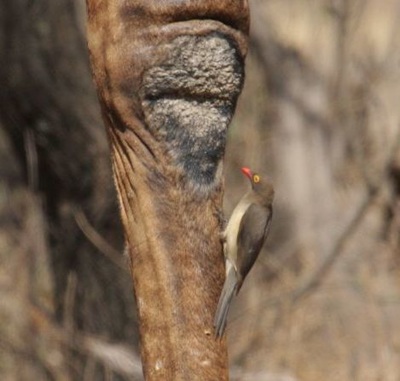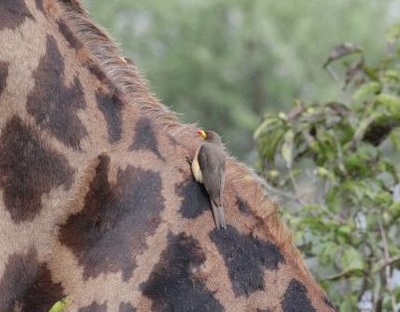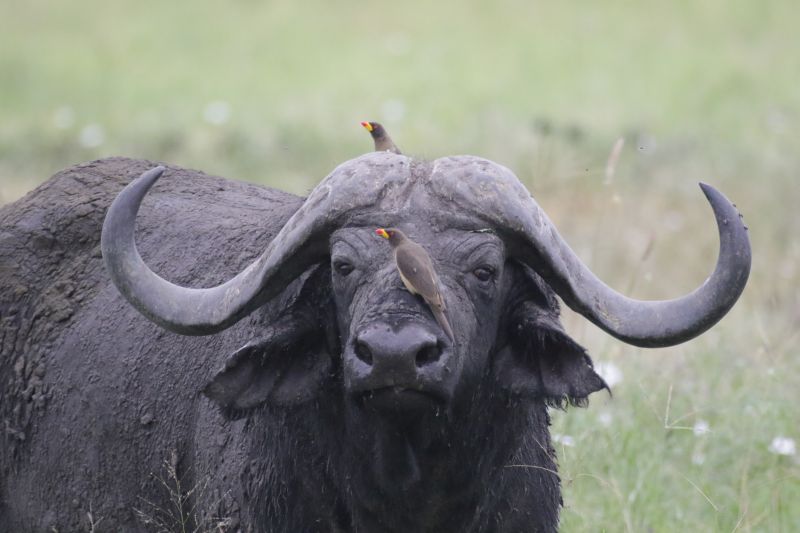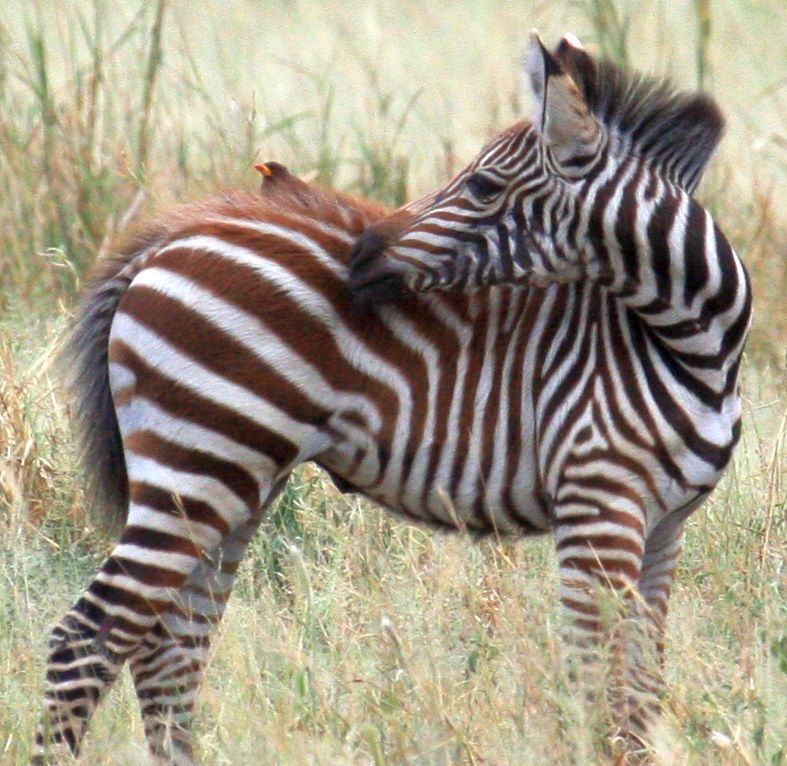|
Anyone watching hoofed mammals in the African savanna also has a good chance of spotting one of two species of oxpecker, a fascinating bird that lives much of its life clinging to ungulates and eating such delicacies as ticks, blood, dandruff, mucous, and earwax! Red-billed (Buphagus erythrorynchus) and Yellow-billed Oxpeckers (B. africanus) have short, sharp claws that facilitate clinging to animals, long stiff tails that hold them upright whilst clinging, and flattened beaks with a sharp cutting edge for handling ticks. They are also both highly social cooperative breeders that nest in tree cavities during the rainy season. The relationship between oxpeckers and ungulates has been traditionally considered mutualistic, as the oxpeckers obtain food from blood in ticks while at the same time the ungulates benefits from tick removal. Some scientists have questioned whether the relationship might be more parasitic, as oxpeckers also feed upon wounds, often causing the wounds to remain open. However, ungulates appear to benefit when oxpeckers help to lower their tick burden. The question remains open for further study.
0 Comments
Your comment will be posted after it is approved.
Leave a Reply. |
Science News and Updates From the Field from Wild Nature Institute.
All Photos on This Blog are Available as Frame-worthy Prints to Thank Our Generous Donors.
Email Us for Details of this Offer. Archives
July 2024
|
|
Mailing Address:
Wild Nature Institute PO Box 44 Weaverville, NC 28787 Phone: +1 415 763 0348 Email: [email protected] |
|





 RSS Feed
RSS Feed
